Root system architecture of oilseed rape under two phosphate availabilities

One important adaptation of plants to Phosphorus (P) deficiency is to alter root system architecture (RSA) to increase P acquisition from the soil, but soil-based observations of RSA are technically challenging, especially in mature plants. Pan et al. (pp. 173–184) developed a new large Brassica-rhizotron system to study RSA dynamics of B. napus in soils at low and high P. RSA parameters measured in polycarbonate plate roots were empirically consistent with analyses of excavated roots. Given that root senescence is likely to occur earlier at low P, crop P deficiency is likely to affect late water and nitrogen uptake.
Organellar phylogenomics of Sphagnum
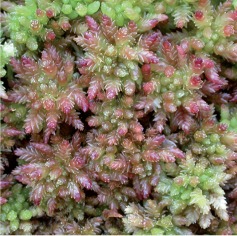
Sphagnum (peatmoss) is rapidly developing as a model for ecological genomics research. Twenty or more species of Sphagnum often co-exist within peatlands and sort themselves relative to abiotic niche gradients. Approximately one third of all terrestrial carbon is currently bound up in Sphagnum-dominated peatlands. Fundamental to the utility of peatmosses for ecological research is a phylogenetic framework for the genus, but relationships among major clades within Sphagnum have been difficult to resolve. Shaw et al. (pp. 185–196) present a phylogenomic analysis for Sphagnum based on mitochondrial and plastid genome sequences and resolve clades suggesting that interspecific ecological differentiation and the evolution of traits that impact global climate evolved early in diversification of peatmosses.
Spore settling velocity to assess moss dispersal rates
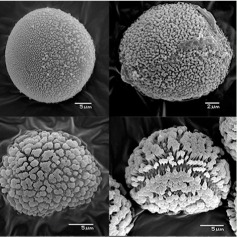
The settling velocity of diaspores is a key parameter influencing dispersal ability in wind-dispersed plants but remains largely undocumented in bryophytes. Zanatta et al. (pp. 197–206) measured this parameter for nine species using a fall tower design combined with a high-speed camera and determine that, while settling velocity can be estimated by spore diameter in most of the cases, some spores show important departures from theoretical expectations. The authors investigate the potential causes of this divergence by taking specific variation in spore shape and surface roughness into account and suggest that this affects the balance between density and drag.
The remarkable stomata of horsetails (Equisetum)

Horsetails are an ancient group of land plants that possess many unusual features, including the structure and development of the apertures (stomatal pores) in the epidermis. In addition to a symmetric pair of guard cells, stomata in Equisetum are delimited by an overlying pair of neighbour cells with characteristic vault-like radiating thickenings. Stomatal development involves a well-defined series of asymmetric and symmetric mitoses. The results of Cullen and Rudall (pp. 207–218) contribute to our understanding of the diverse patterns of stomatal development in land plants. They add to a considerable catalogue of highly unusual traits of horsetails - one of the most evolutionarily isolated land-plant taxa.
Silicon enhances cellular defences in root tissues of cotton after pathogen inoculation
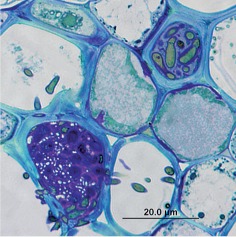
Silicon has been shown to enhance the resistance of plants to fungal and bacterial pathogens, however the underlying mechanisms have not been studied in detail in most plants. Whan et al. (pp. 219–226) compare cellular and biochemical modifications in root tissue of two cotton cultivars grown in media amended with soluble potassium silicate, and inoculated with a vascular wilt pathogen, Fusarium oxysporum f. sp. vasinfectum. Cellular defences, including deposition of electron dense material and accumulation of phenolic compounds, were more rapidly induced and more intense after Si treatment in a cultivar with greater inherent resistance to the pathogen.
Conflicting selection on floral traits
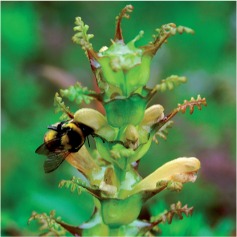
Floral traits attracting pollinators may also attract seed predators; however, evidence for conflicting selection on such traits remains scarce. One could expect that such selection generated by pollinators and seed predators varies geographically. Examining multiple populations across a geographic mosaic of environments and floral variation, Sun et al. (pp. 227–237) investigate female reproductive success in a bumblebee-pollinated subalpine herb, Pedicularis rex, in which tubular flowers are subtended by cupular bracts holding rain water. They found that plants experienced conflicting selection: those with flowers that were more exserted beyond the water-holding bracts were better pollinated, but also suffered more seed predation.
A meta-analysis of leaf nitrogen distribution within plant canopies
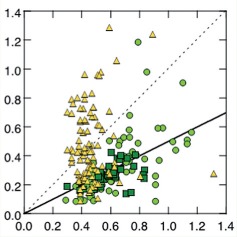
Leaf N is generally highest in top leaves and decreases with depth in leaf canopies. Although such a gradient contributes to efficient use of canopy N for photosynthetic production, the gradient of leaf N is suboptimal in actual canopies. Hikosaka et al. (pp. 239–247) present a meta-analysis of the vertical gradient of leaf N which reveals that in most canopies except for wheat, the slope of the leaf N was half of the optimal slope.
Plants with similar colours attract different pollinators.
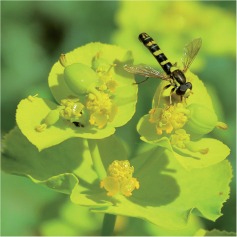
Different pollinator groups (bees, ants, wasps, flies, beetles and butterflies) preferentially visit flowers of certain colours. Interestingly, these colour preferences match the predictions of the pollination syndrome theory. However, flowers with similar colours do not attract similar pollinator assemblages. This is due to the fact that most flower species are pollinator generalist. Reverté et al. (pp. 249–257) conclude that although pollinator colour preferences seem to condition plant-pollinator interactions, the selective force behind these preferences has not been strong enough to mediate the appearance and maintenance of tight colour-based plant-pollinator associations.
Brachypodium peroxidase and drought tolerance

The peroxidase (POD) family shows functional diversity. Luo et al. (pp. 259–270) demonstrate that Brachypodium distachyon ecotypes have distinct specific POD isozymes. Two POD genes are closely associated with whole-plant response to drought, which may lead to natural variations of drought tolerance. The role of specific POD genes in differentiating Brachypodium accessions with contrasting drought tolerance could be associated with the general fitness of Brachypodium distachyon during evolution.
Silicon enhances leaf remobilization of iron in cucumber

Recently it has been demonstrated that Si nutrition can alleviate Fe deficiency chlorosis in cucumber (Cucumis sativus) by enhancing acquisition and root-to-shoot translocation of Fe. Here, Pavlovic et al. (pp. 271–280) show that Si induces Fe mobilization in older (sink) leaves and increases its retranslocation to younger (source) leaves. In older leaves, Si enhanced expression of NAS1 transcripts responsible for an increased tissue concentration of Fe chelator nicotianamine (NA). This was paralleled by an increased expression of the YSL1 transporter and hence more efficient movement of Fe-NA complex from source to sink leaves via the phloem.
Breeding system diversification and evolution in Poa

Species of Poa show an exceptional diversity in breeding systems represented by the occurrence of hermaphroditism to dioecism, with gynomonoecy very frequent among species in South America. Giussani et al. (pages 281–303) contribute to the understanding of the evolutionary patterns in Poa associated with species sexuality and their current distribution. Divergence dating provides a temporal context to the evolution of breeding systems. Infrageneric taxonomic categories in New World Poa supersect. Homalopoa can be accommodated to the phylogenetic results in correlation with reproductive system and geography.
Silicon moderated K-deficiency-induced leaf chlorosis
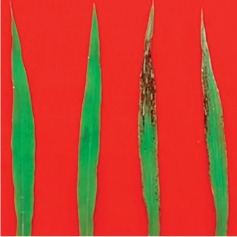
Silicon (Si) has been widely reported to alleviate the plant nutrient deficiency, but the alleviating effect of Si on potassium (K) deficiency and its underlying mechanism are poorly understood. Chen et al. (pp. 305–315) investigate the influence of Si on putrescine (Put) metabolism under K deficiency in Sorghum bicolor, and find that Si application could reduce K-deficiency-induced Put accumulation by inhibiting Put synthesis and could decrease H2O2 production via Put oxidation. Decreased H2O2 accumulation contributes to the alleviation of cell death, thereby alleviating K-deficiency-induced leaf chlorosis and necrosis. The results indicate that Si application could alleviate the K deficiency-induced leaf chlorosis by decreasing H2O2 via inhibiting Put synthesis and oxidation.
Simulation of shoot and fruit growth in apple

Modeling approaches which reveal how a plant allocates carbohydrates to the different organs are of major interest since carbohydrate allocation determines many growth processes. In this study, Pallas et al. (pp. 317–330) describe a modeling approach allowing the simulation of carbohydrate allocation and organ growth in apple trees by coupling two models, MappleT and QualiTree. The coupled model was appropriate to simulate growth characteristics at the tree and organ scales. This modeling approach shows the necessity of accurately simulating the impact of distances between sources and sinks as well as shoot ontogenetic characteristics, in order to represent the observed growth variability within tree architecture.
Breaking dormancy in Persoonia longifolia endocarps
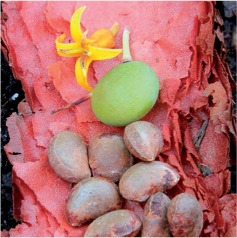
Germination of species with hard woody indehiscent endocarps has troubled seed scientists for many years. To understand how germination is regulated in such species Chia et al. (pp. 331–346) show that the conditions required for dormancy loss and germination are effectively revealed through burial trials matched with environmentally relevant laboratory experiments on a representative species, Persoonia longifolia, from southern Western Australia. This approach allowed the authors to identify the key drivers of dormancy loss through a comprehensive series of experiments executed over five years which revealed that warm plus cold stratification is required to break physiological seed dormancy in P. longifolia.
Sex differences and plasticity in dehydration tolerance
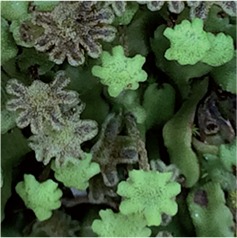
Plants have a multitude of strategies for drought survival. Dehydration tolerance (DhT), is one such strategy that provides an opportunity to identify key genes, physiological traits, and ecological factors that could be used to reduce crop and species loss from drought. Here, Marks et al. (pp. 347–356) demonstrated that Marchantia inflexa, a tropical liverwort, has moderate DhT. Interestingly, M. inflexa has the capacity to acclimate to different environmental moisture levels, suggesting that DhT is plastic in this species. The authors demonstrate that males are less DhT than females, which may explain the female biased sex ratios observed in this and many bryophyte species.
Summer dormancy and seasonal growth in California perennial grasses
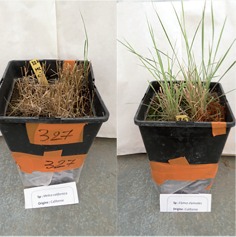
Superior drought survival is expected to result in reduced productivity and competitive ability, but this expectation has seldom been tested in herbaceous perennial species. Balachowski et al. (pp. 357–368) quantified seasonal growth, functional traits, and drought survival strategies in eight California perennial grasses. Contrary to common assumptions, they found that summer dormancy, an adaptation to Mediterranean-type climates, was associated with greater springtime productivity and more competitive functional traits. The authors conclude that, because summer dormancy confers greater functional similarity to exotic annual species currently invading California grasslands, native summer dormant taxa may play an increasingly important ecological role in the future of these ecosystems.
Prey-induced responses in carnivorous Nepenthes
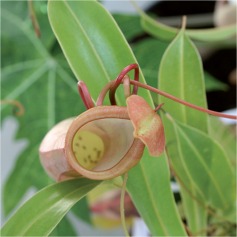
Carnivorous plants of the genus Nepenthes catch and digest prey, mainly arthropods, in their pitcher traps in order to obtain additional nutrients such as nitrogen and phosphate. The digestive character of the pitcher fluid is well known; other features of the fluid are less well understood, in particular the induction and regulation of its composition. Here, Yilamujiang et al. (pp. 369–375) study the induction of both phytohormones and digestion-related genes in the pitcher of Nepenthes alata. The authors demonstrate that insect prey as well as chitin is able to induce first jasmonate phytohormones which in turn can induce genes for digestive enzymes such as a protease, nepenthesin, or a chitinase suggesting a defined signaling pathway.


